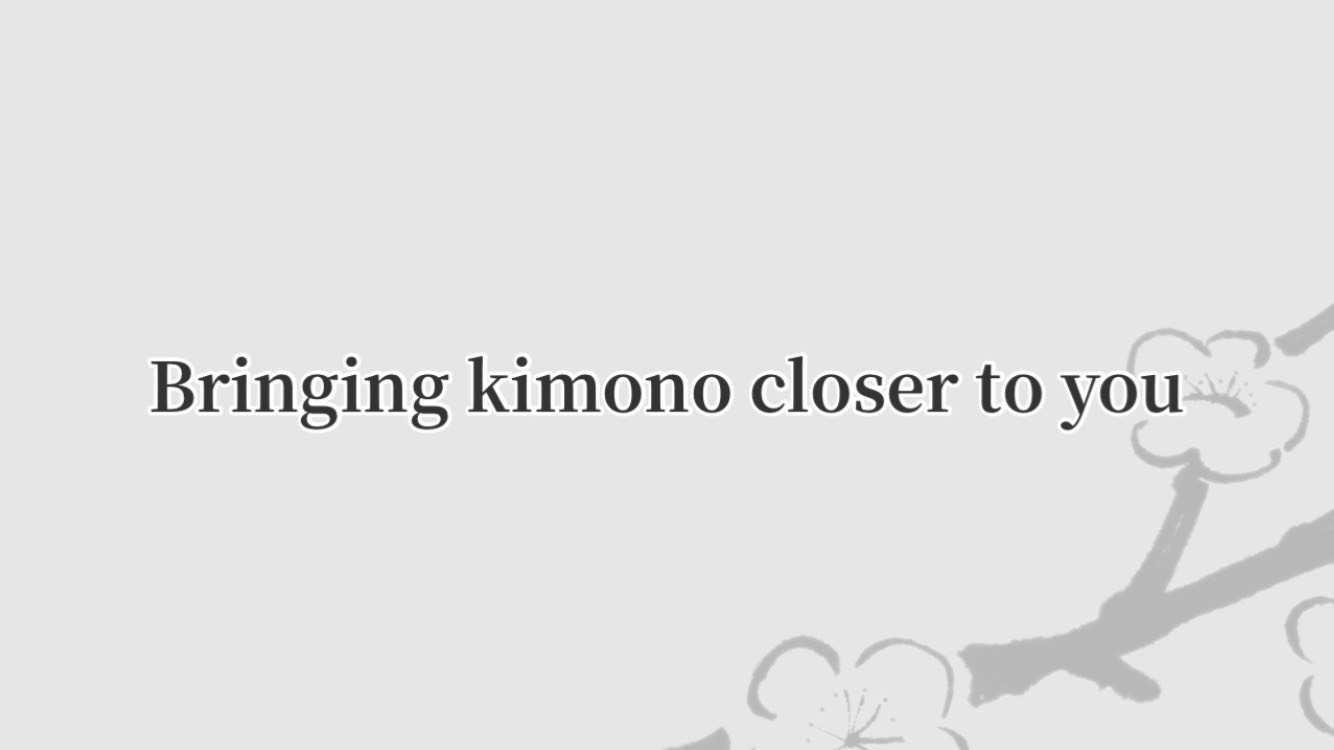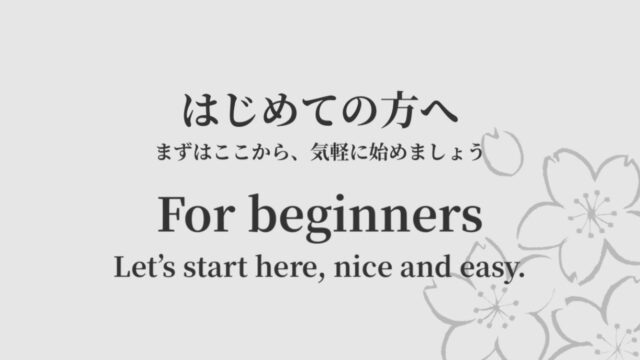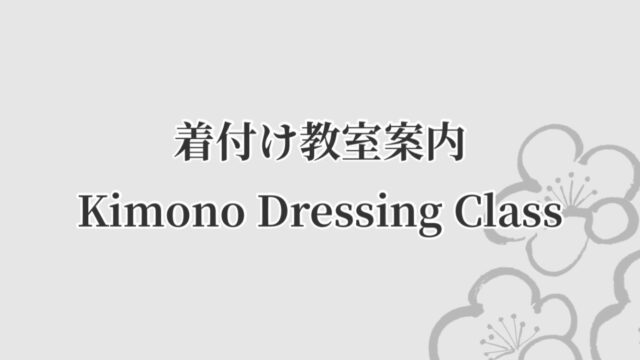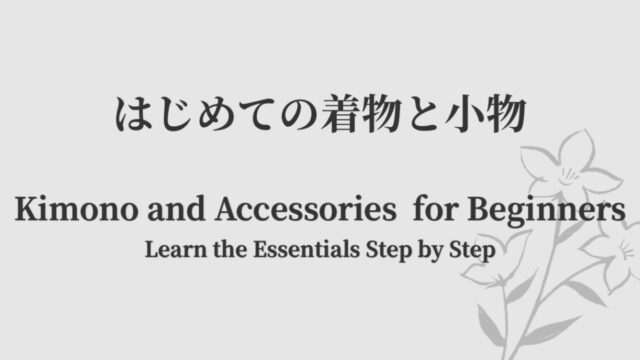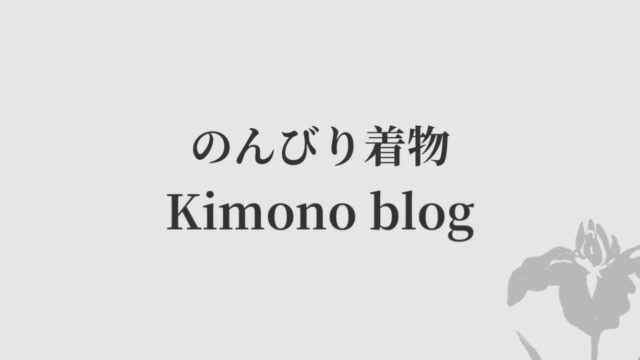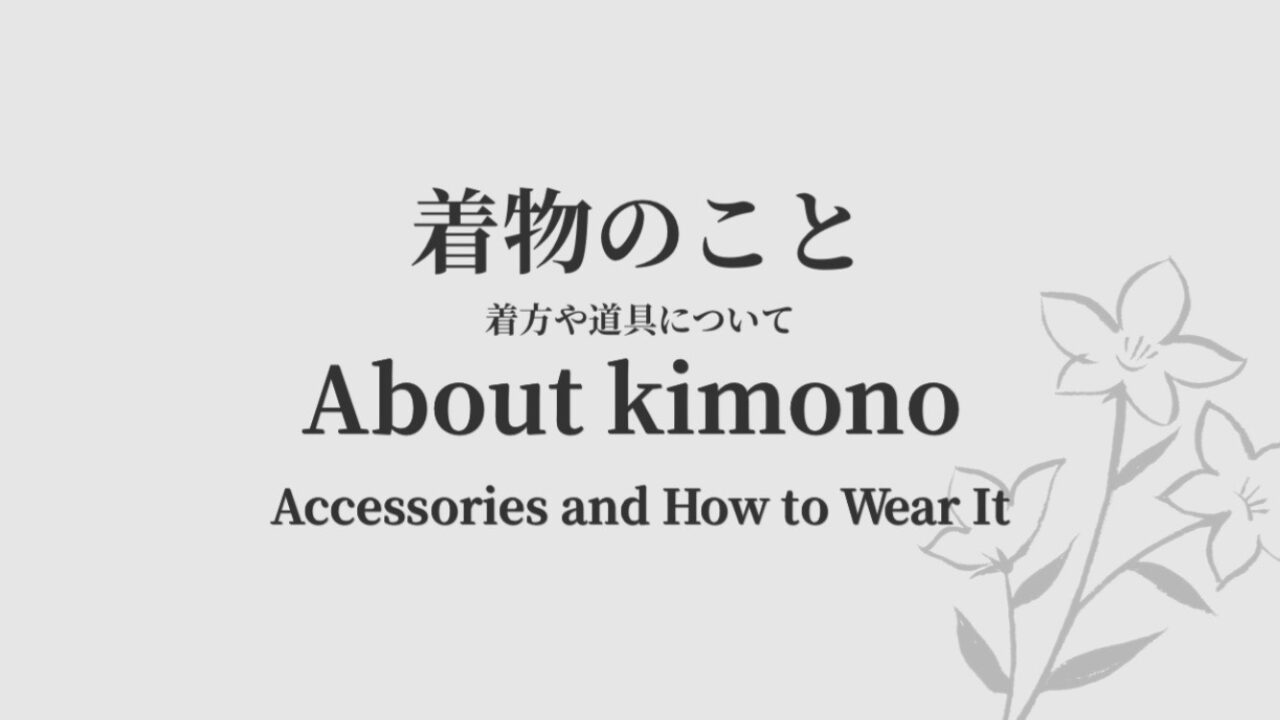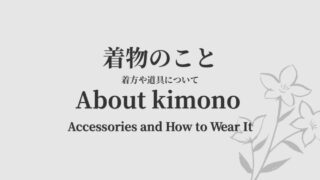着物
素材
ここでは大まかな素材の種類を書きますね。
絹の着物
天然動物性繊維です。タンパク質のヒブロインの乱反射で光沢がでます。またこのヒブロインの摩擦によってキュッキュッという絹鳴りになります。保湿性通気性に優れていて、夏涼しく冬温かいです。
洗濯を家で出来ません。雨に弱いですし、湿気にも弱いので保管に気を付けないといけないです。
京友禅、加賀友禅、大島紬、結城紬等々
麻の着物
天然植物性繊維です。多孔質なので、風通しがよく、汚れにくいです。おもに夏着物という感はありますが、長襦袢は一年中着られる方もいらっしゃいます。シワになりやすい面もあります。
越後上布、小千谷縮、能登上布、近江上布等々
木綿着物
天然植物性繊維です。中空繊維です。吸湿性、吸水性があり、肌触りも良いです。産地で厚みも違うので、一年中着れます。 縮みやすいです。 普段着るコットンTシャツと同じと思えば、私などは安心出来ます。
松坂木綿、会津木綿、久留米絣、伊予絣等々
ウールの着物
天然動物性繊維です。普段洋服のセーターなどでよく着てるのと同じです。家でも洗えるので、気軽に楽しめます。収納の時は虫に一番注意が必要です。特に絹の着物と同じ場所には収納しないことをオススメします。シルクウールなどもありますので、洗濯表示は一応チェックしてください。
ポリエステルの着物
合成繊維です。摩擦や水に強いので洗えます。私は普段洋服で着ていることが多いので気軽に楽しめます。滑りやすいしムレやすいという方もいらっしゃいます。
麻、綿、ウール、ポリエステルは基本自宅で洗えますが、購入する時、その着物のお手入れ、洗濯方法は確認しましょう。お店でも銘柄でも変わったりすることはあります。その上で自分なりのお手入れを模索してくださいね。
kimono
material
It is roughly divided kimono material.
Silk kimono
natural animal fiber. The diffuse reflection Fibroin give it a luster. Fibroin makes a sound. ( silk ringing)
It is heat-retaining. It is also breathable. So it is warm in winter and cool in summer.
silk can not wash at home. It is vulnerable to rain and humidity. Please be careful of moisture when storing.
Kyo yuzen, Kaga yuzen, Oshima Tsumugi, Yuki tsumugi, etc.
Hemp kimono
Natural plant fiber. It is porous, so it is breathable. It is hard to get dirty. It is mainly a kimono worm in summer. However, some people wear hemp nagajyuban(長襦袢) all year round. It is easy to wrinkle.
Ecjigo jofu, Ojiya-chijimi, Omi jofu, etc.
Cotton kimono
Natural plant fiber. Hollow fiber. It is hygroscopic and water absorption. It feels good on the touch side.
The thickness of the cloth is different depending on the production area of the kimono, so you can wear it all year round. It shrinks.
I usually wear cotton t-shirts in clothes! If I think it is the same, I can wear it with peace of mind.
Matsusaka cotton, Kurume kasuri, etc.
Woolen kimono
natural animal fiber. You can wash it at home. You can enjoy it easily.
Please be careful of insects when storing. Please keep wool and silk kimonos separately.( It would be a problem if insect could eat silk kimonos together.) There are silk wool kimonos, so please check the laundry label just in case.
Polyester kimono
Synthetic fiber. It is resistant to friction and water, so you can wash it.
It is the material I usually wear, so I can wear it easily. Some people say it is slippery and get stuffy.
Hemp, cotton, polyester and wool are basically washable at home. However, when purchasing, please check with the store how to take care of the kimono and wash it. It may change depending on the store or brand. On top of that, please find a way to take care of your own kimono.
おしゃれ着着物の着方 How to wear fashionable kimonos
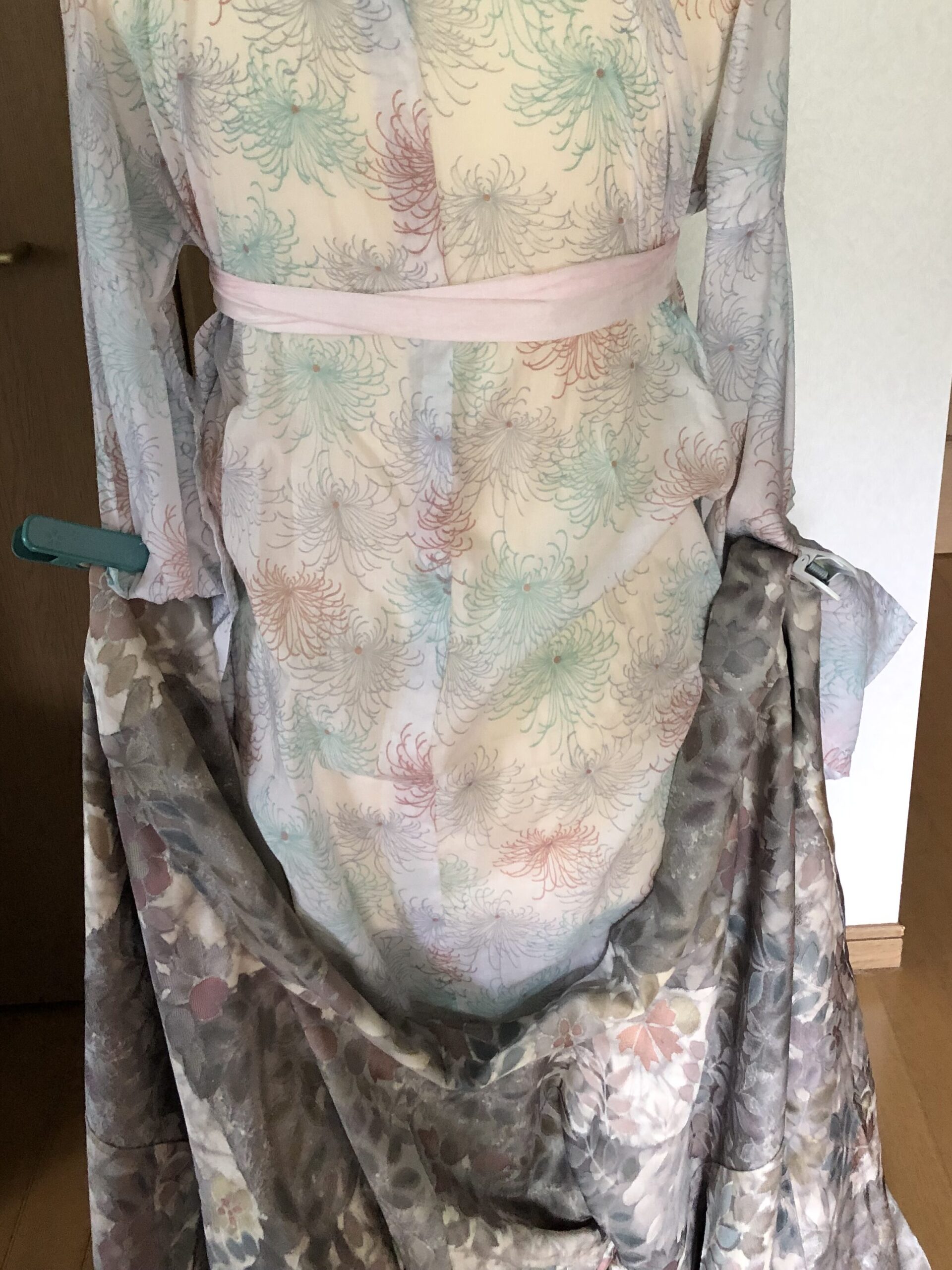
長襦袢の袖を手に持って、着物の袖に手を通します。着物の背中心と背骨の位置を合わせて左右の衿がずれてないか確認してください。背骨で線対称に着ます。
Kimono back center to ones spine and check if the left and right collars are offset. Let`s wear it line symmetry at the spine.
裾合わせをします。衿先から10㎝ほど手前を下前は右手、上前は左手でもって脇辺りで広げます。そして、床すれすれまで持ち上げます。その時の手の高さは腰骨より上にしてくださいね。
Let`s the hem first. Hold it this side 10 cm from the tip of one`s kimono collar. Hold the right collar with your right hand and the left collar with your left hand. Lift hem up to 1 or 2 cm from the floor.
上前(左手)を右腰骨に持っていって合わせます。余った布は全て下前(右手)に引いておきます。
Hold your kimono and hold your left hand to your right hipbone. Pull the excess cloth to your right hand.
この作業で上前位置を決めます。
This action determines the hem of the kimono.
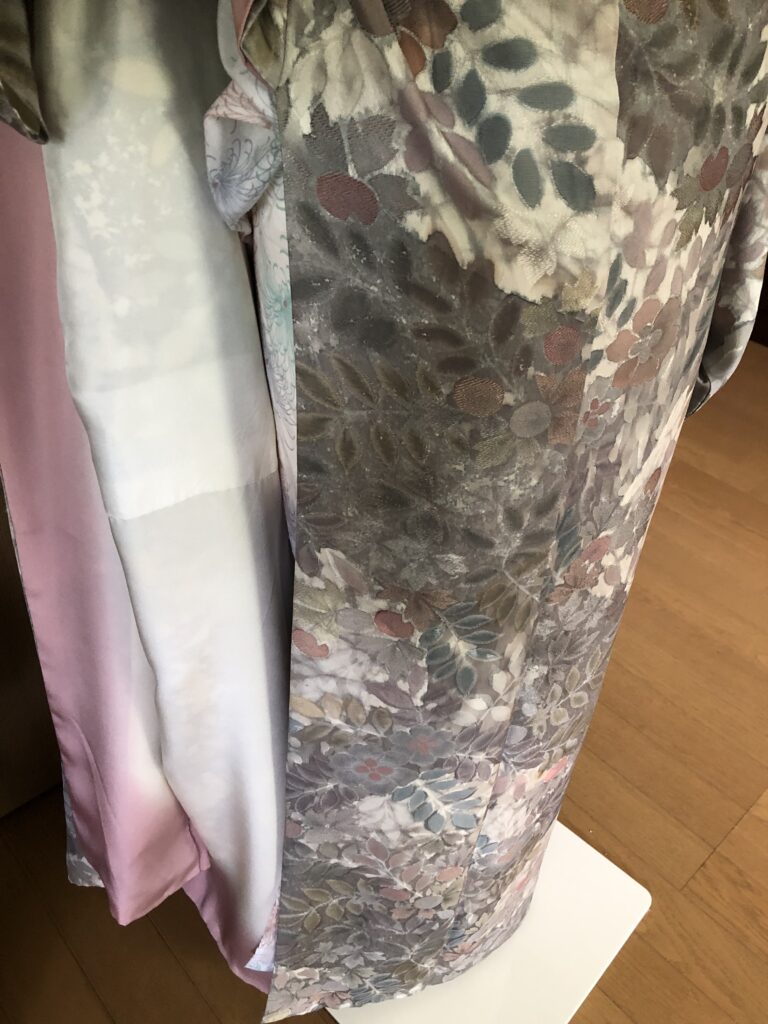
上前(左手)を右腰骨から外し開きながら、下前(右手)を左腰骨の方へ持っていきます。裾は床すれすれを通しますが左腰骨まで来たら15㎝~20㎝ぐらい裾を上げます。(身幅の広い着物は脇で折り返しましょう)
Take your left hand away from your right hipbone and hold your right hand to your left hipbone. Raise the tip of the right hem 15 to 20 cm from the floor at the left hipbone position.( When the width of the kimono is wide, plsase fold it back at the left hipbone.)
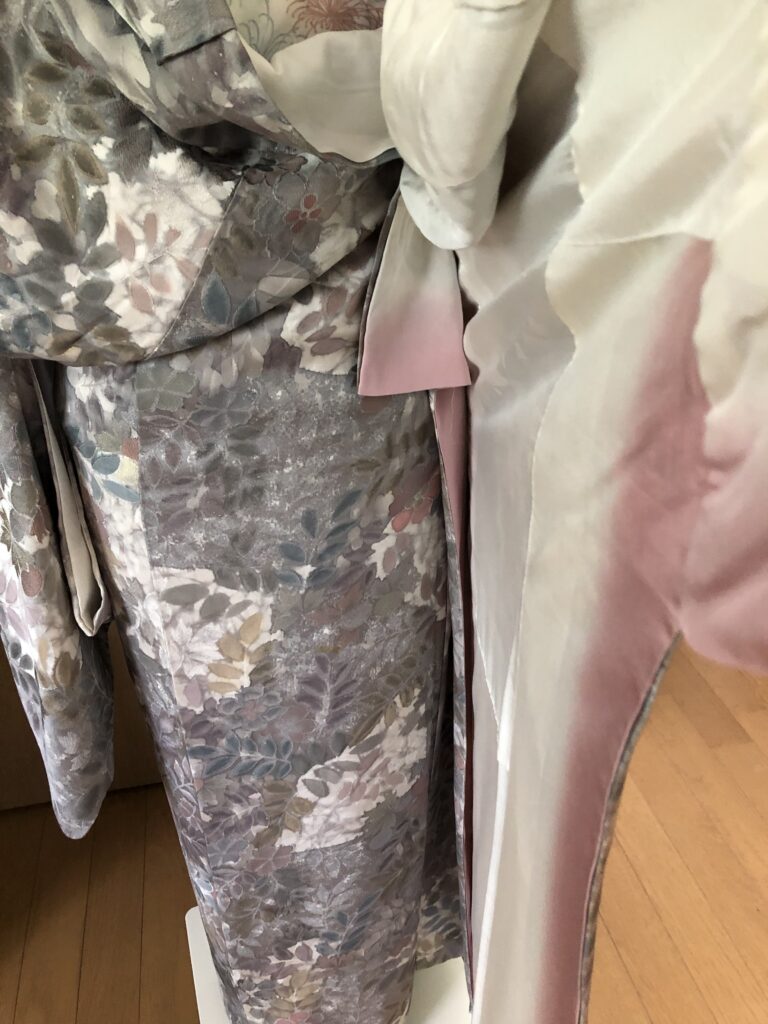
上前(左手)も同じように裾は床すれすれを通しながら右腰骨に持っていって今度は4~5㎝上げます。
I will take my left hand to the position I just decided. Raise the tip of the left hem 4 to 5 cm from the floor.
上前を押さえてシワを伸ばします。腰ひもをします。後ろの帯で交差させてその時にゆっくりギューとしめます。前に持ってきて結びます。結ぶ時は余りしめすぎないことと、中央から少し横にずらして結ぶこと。
Smooth wrinkles with the hands of those who do not hold down their kimonos. I will wear a kosihimo(腰紐). Avoid the center of your body when you tie your kisihimo(腰紐).
痛くないように結びましょう。指1~2本分紐と着物の間に入るくらいにしましょう。紐の端は落ちないよう結んだ紐に挟んでおきましょう
Let`s tie it up so that it dose not painful. For example, you can put one or two fingers between your kimono and kosihimo(腰紐). Hold the end of the kosihimo(腰紐) between the knotted kosihimo(腰紐) so that it does not fall off.
シワがあるなら、親指や人差し指を紐と着物の間に差し込んで背中心から左右対称に脇へシワを運びます。
Insert your fingers between the kosihimo(腰紐) and the kimono and stretch the wrinkles to both sides.
腰ひもして前から見た状態 前
Tie your kosihimo(腰紐) front
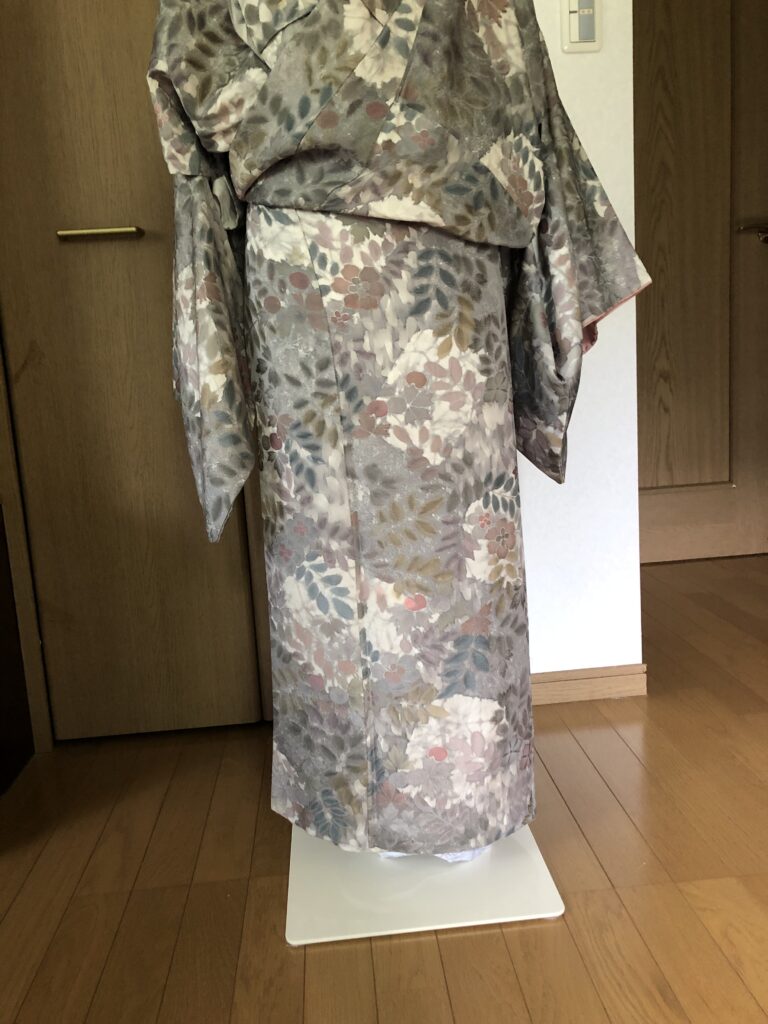
後ろの裾は床すれすれ
The degree to which behind the kimono hem dose not touch the floor.
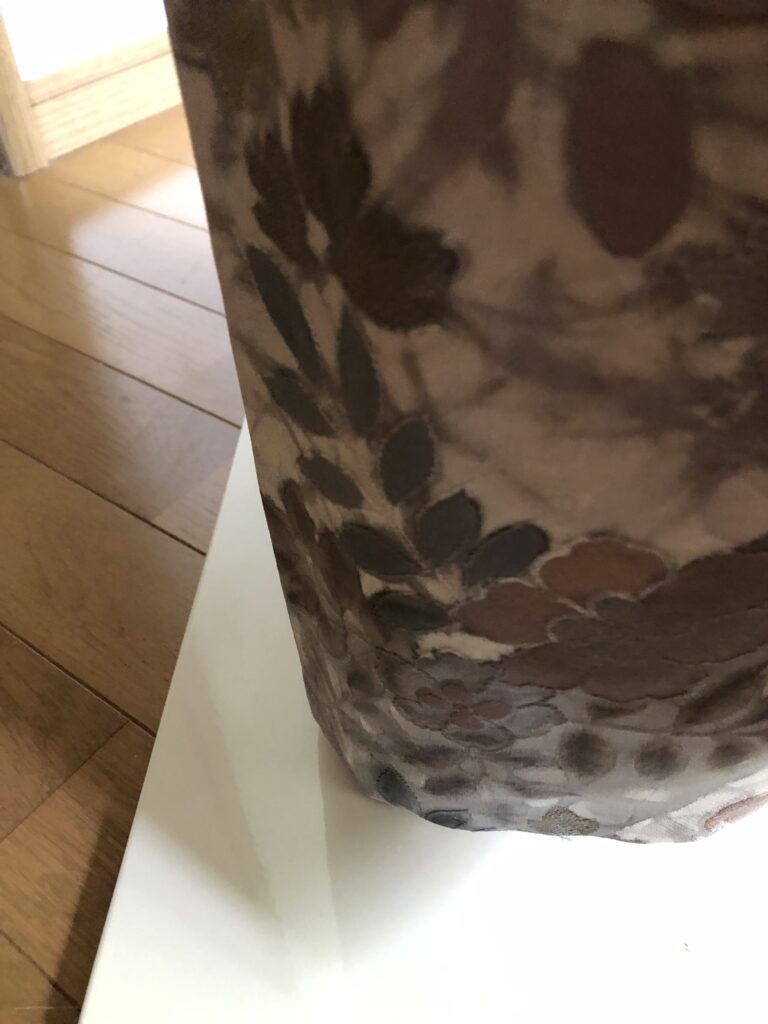
両脇で上げているので、裾すぼまり
I raised the hem of my kimono up at both sides, so the hem is narrow.
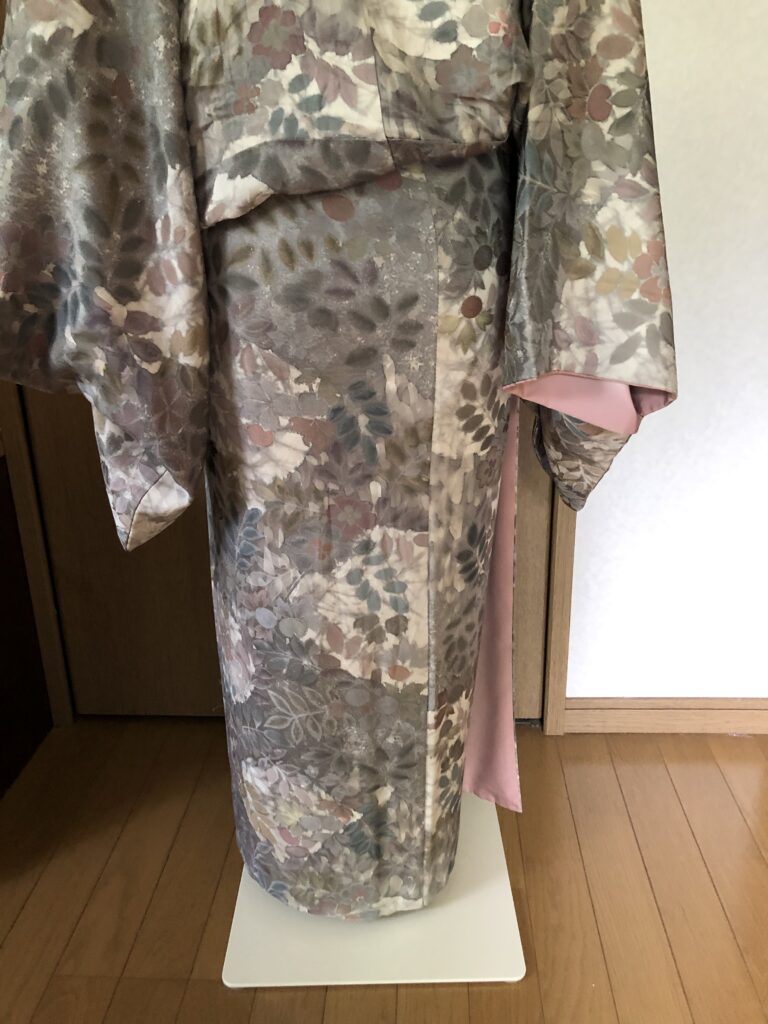
袖の下の穴(身八ッ口)から手を入れて前のおはしょりを整えて、手刀で後ろのおはしょりもトントンと整えます。
I put my hand through a hole in the side of the kimono and trimmed the front and rear ohasyori(おはしょり).( Hand swords, etc)
次は衿です。背中心があっているか確認します。衿後ろは長襦袢の衿より着物の衿をちょっと出します。そのままの流れで耳下で長襦袢衿と着物衿が同じ高さになり、その後衿もとで長襦袢の衿が程よく見えるように衿を整えます。
Next, I will adjust my collar. Make sure your spine and the center of your kimono back are in the sane position. The collar of the nagajyuban(長襦袢)from the back to the shoulder is hodden in the collar of the kimono. Please show me the collar of nagajyuban(長襦袢) in your own way from shoulder to front.
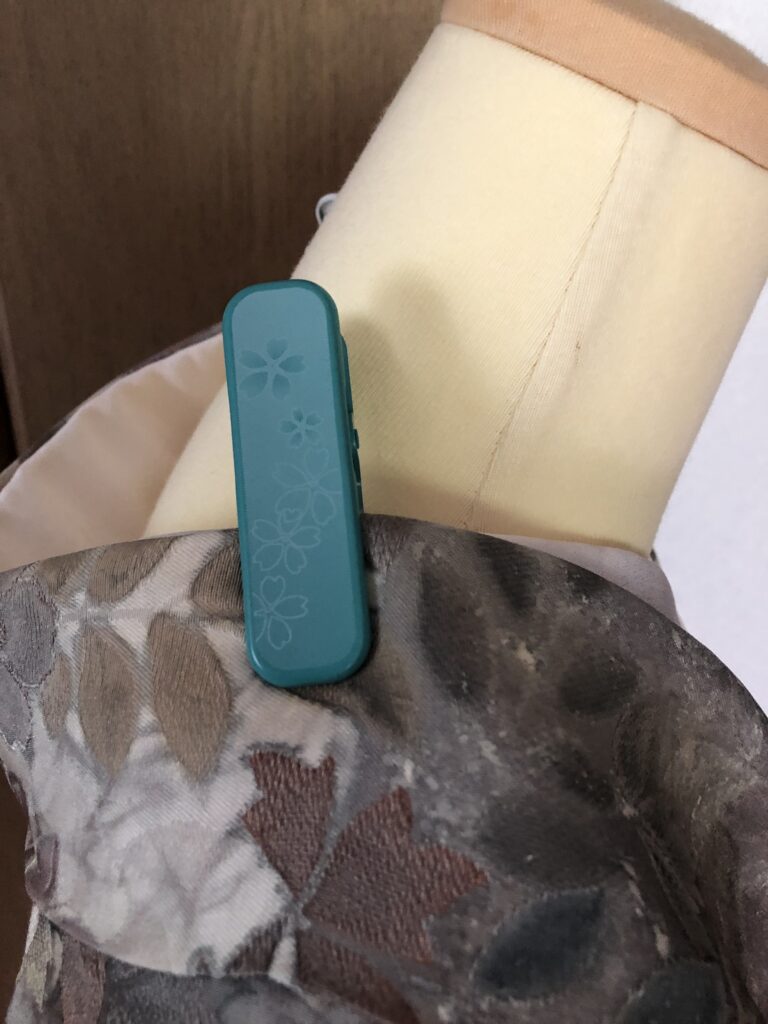
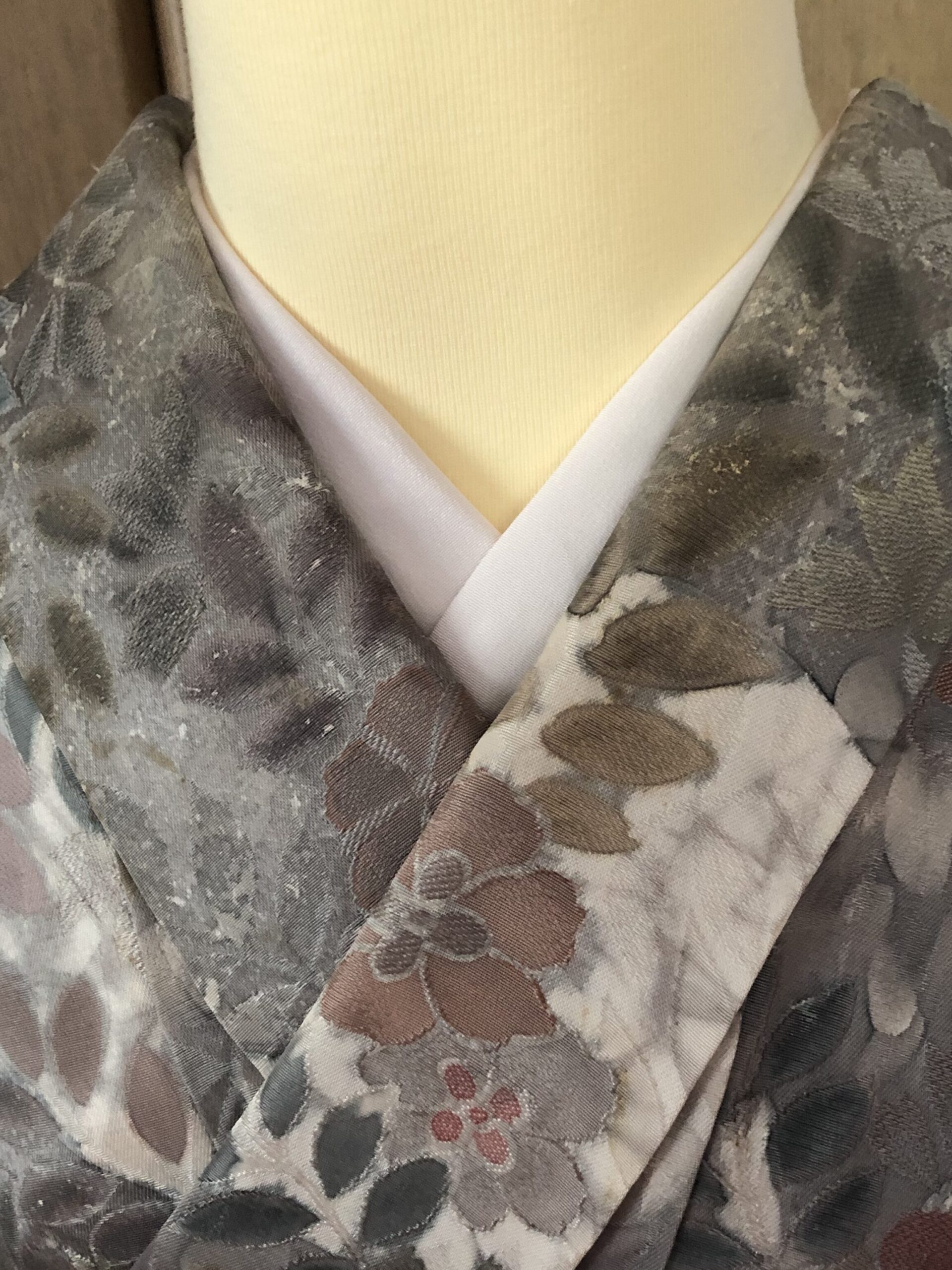
おはしょりが一枚になるようにします。下前の衿の角度を決めたら下の方で内側に三角形に折り上げます。(三角あげ)下前のおはしょり部分を折り上げたのでおはしょりが下前は左側になくなります。上前は整えた衿が崩れないように気を付けましょう。(写真撮る為に上前崩してますが本当はほとんどくずさないようにします。)
Work so that the ohasyori(おはしょり)is one. Do not shift the position of your right collar. Then fold the rest of the cloth near the kosihimo(腰紐)into a triangle. Work will make the ohasyori(おはしょり) one. The ohasyori(おはしょり)will be thinner. ( I am shifting my left collar to take a picture. Please do not shift your left collar.)
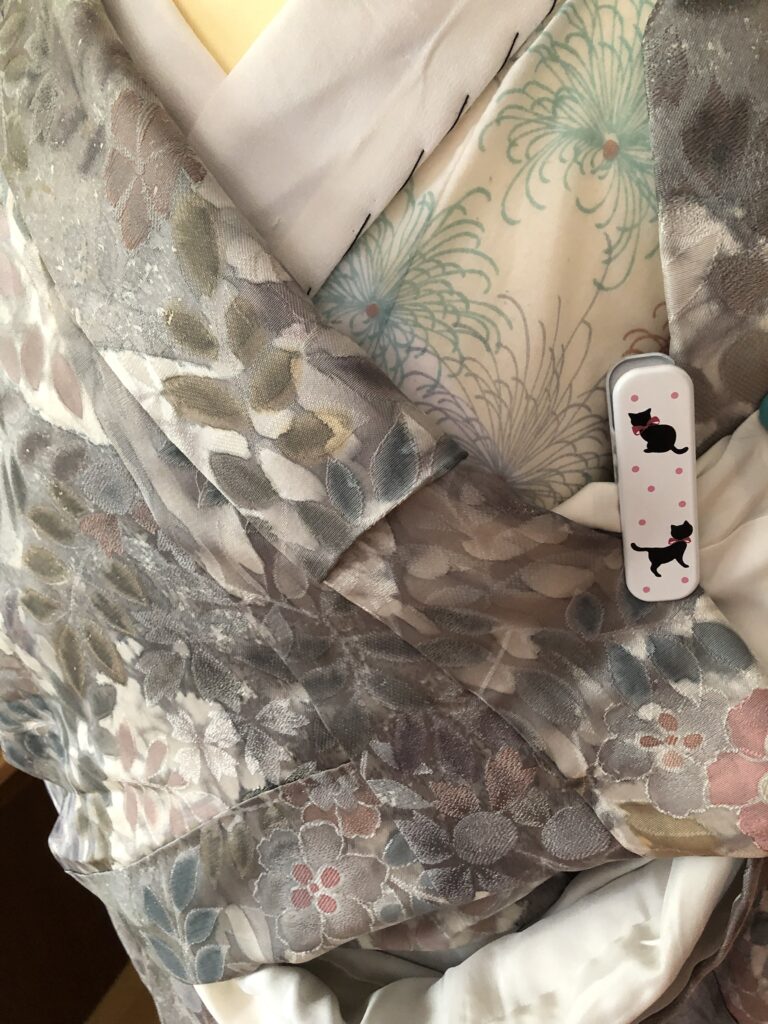
片手で押さえて紐を取りむな紐をします。(紐結び方は長襦袢むな紐と同じです。)
Hold the collar with one hand and tie the munahimo(むな紐).
シワを取ります。まずは後ろから、むな紐の下からゆっくり真下に引っ張ります。着物が体になじむように。
I will get rid of wrinkles. First of all , let`s start with your back. Slowly pull the kimono from under the munahimo(むな紐) so that it sticks to your body.
シワを背中心から左右対称に両脇に伸ばしていきます。
Stretch wrinkles from the center of your back to both sides.
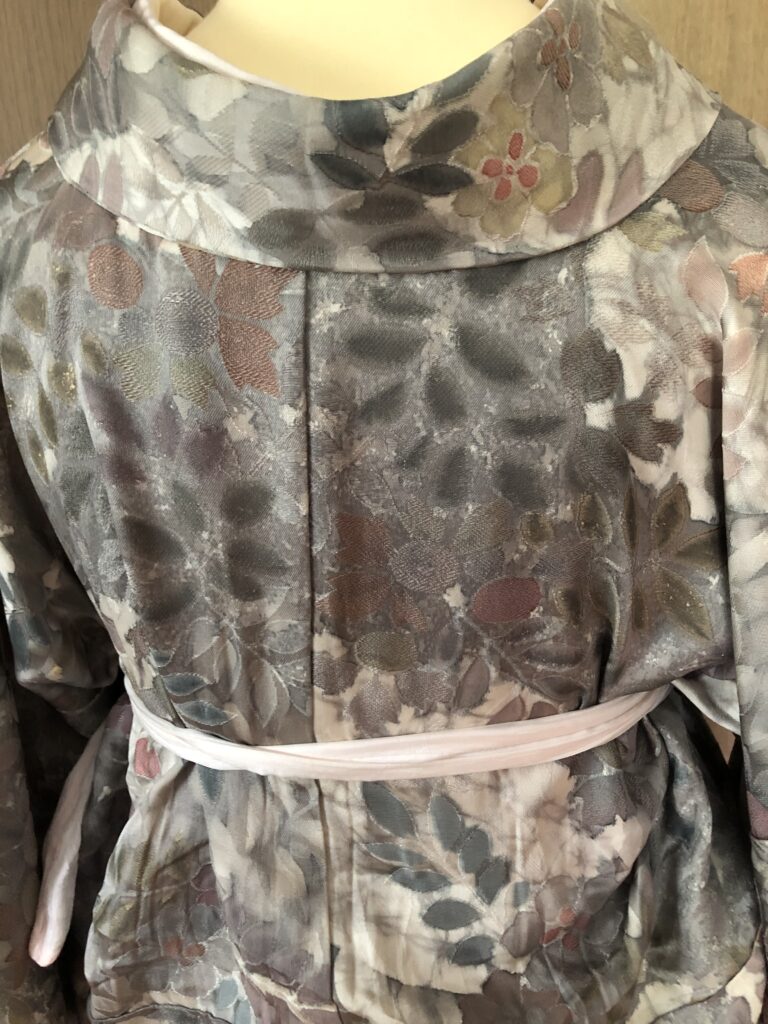
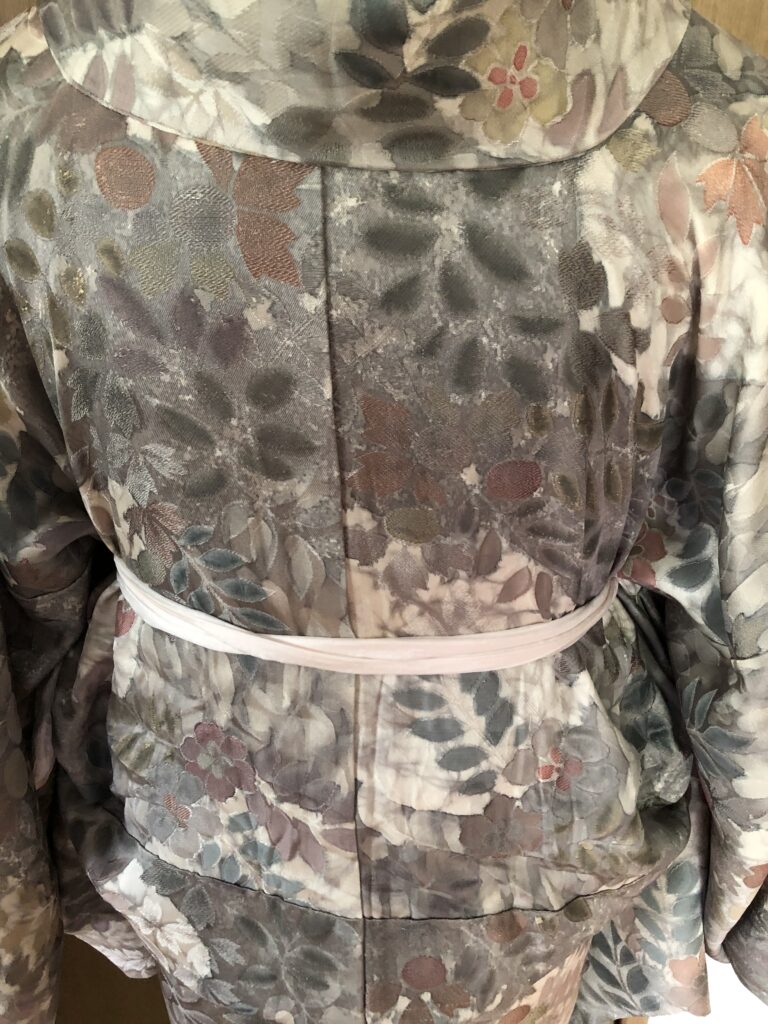
身八ッ口のところのシワが気になるなら、後ろからきたシワをなくなるように前に伸ばしていきます。そこに前身頃の布をかぶせていきます。脇のむな紐の下のおはしょり部分のシワは脇の縫い目でタックを取ります。出来上がりです。
If you are worried about kimono wrinkles under your armpit, put the front cloth on the back cloth to remove wrinkles. The excess cloth on the ohashori( おはしょり)is tucked in.
脇 side
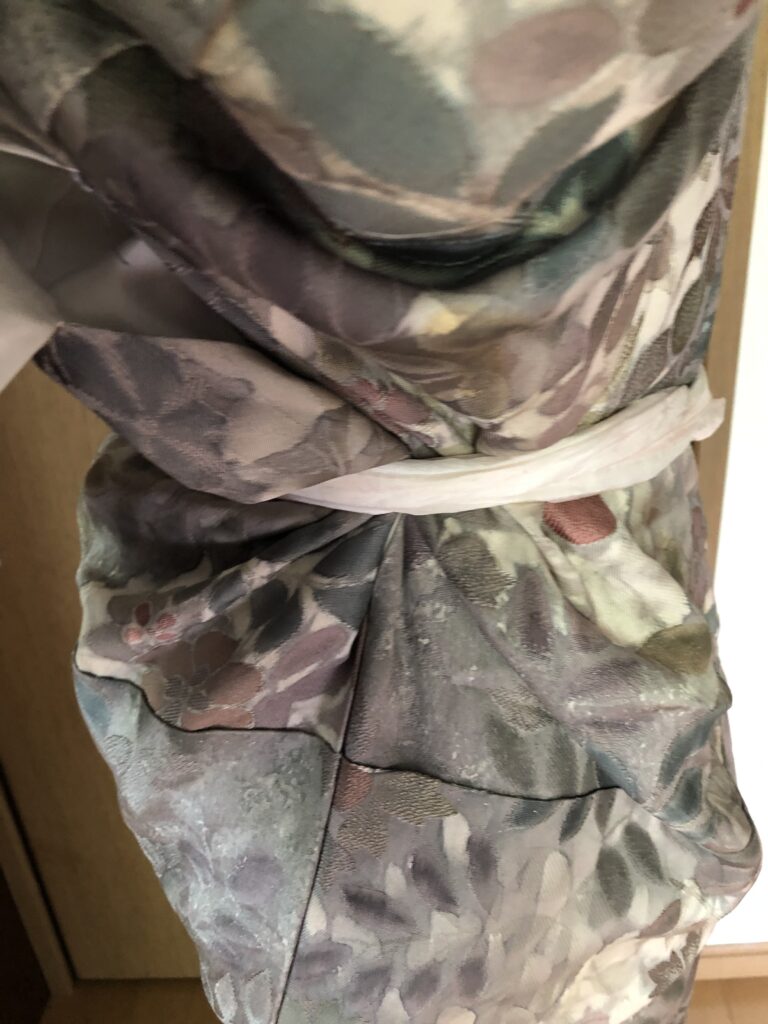
左脇 Left side
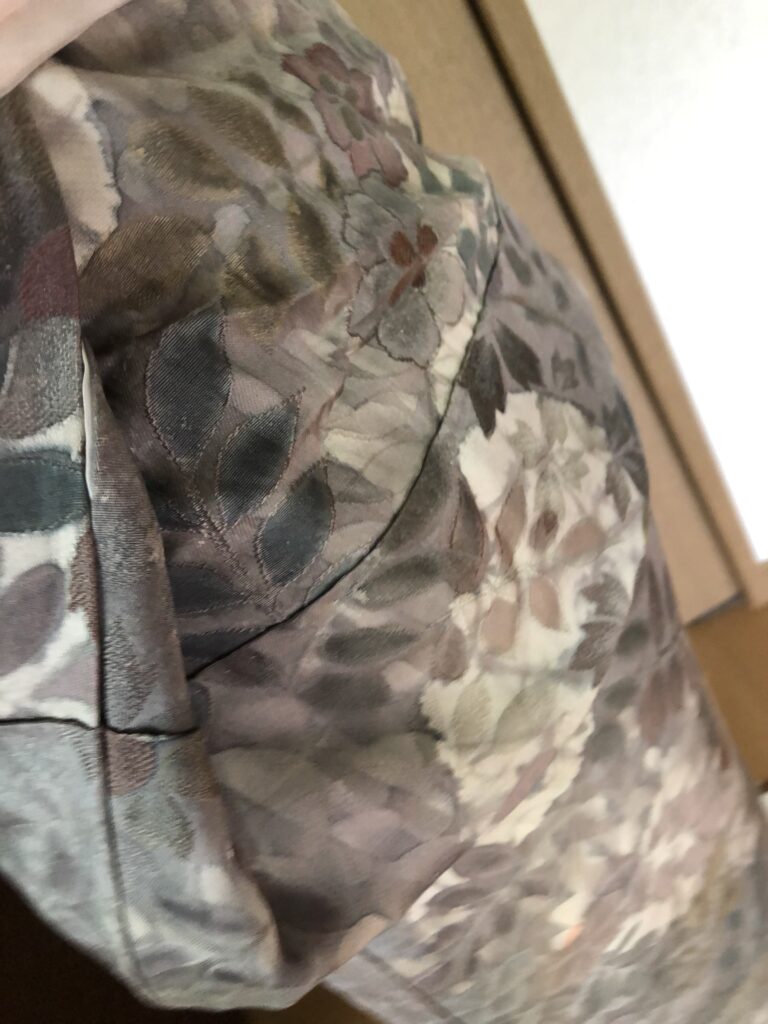
右脇 Right side
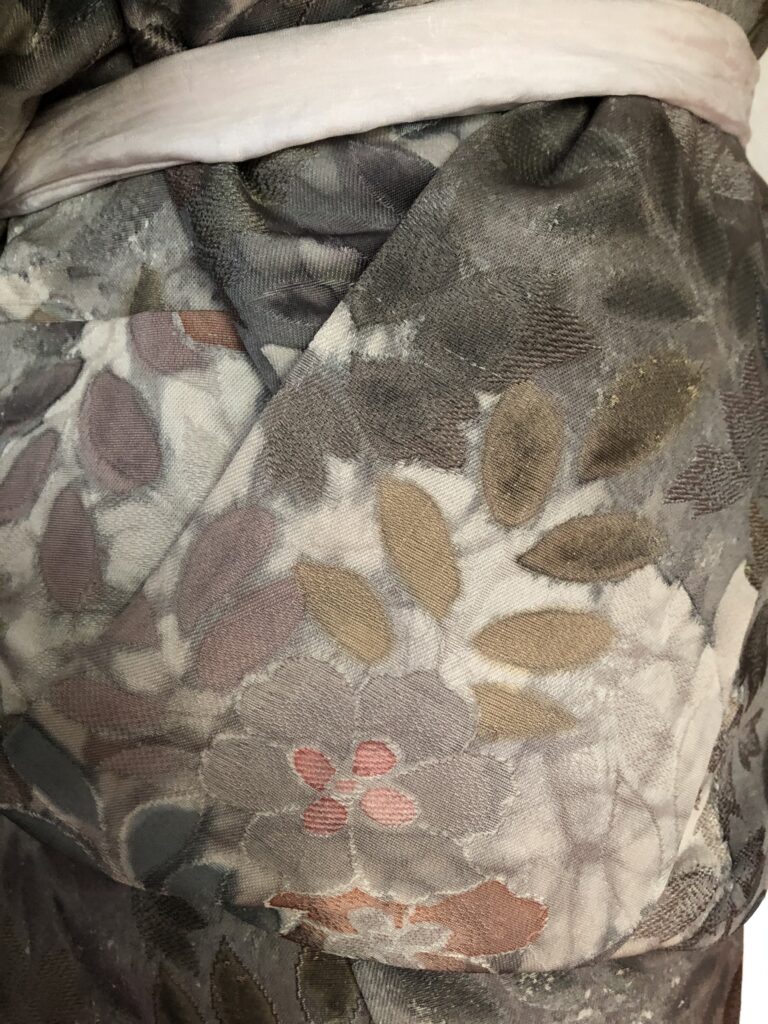
前にあるここの線が出来るだけ合うようにできるといい感じ
This line on the right front of a kimono. If this line matches, good.
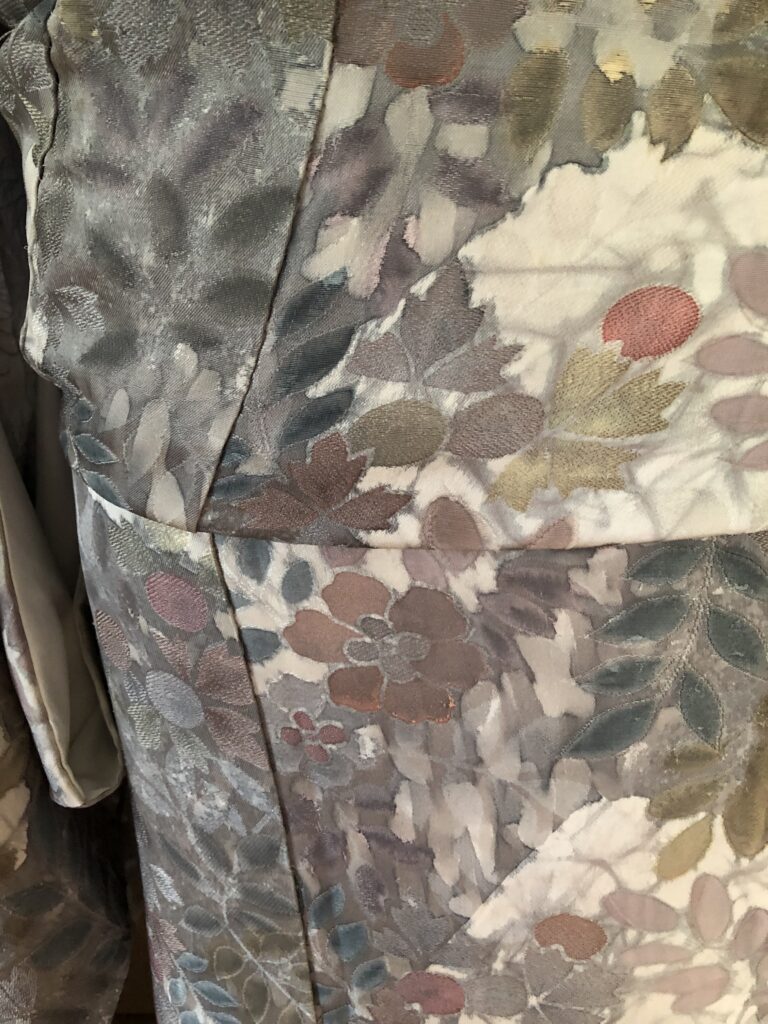
おはしょりが長いなどあったら,伊達締めや腰紐で調整してください。
If the ohasyori(おはしょり) is long, please adjust it with a datejime (伊達締め) or kosihimo(腰紐).
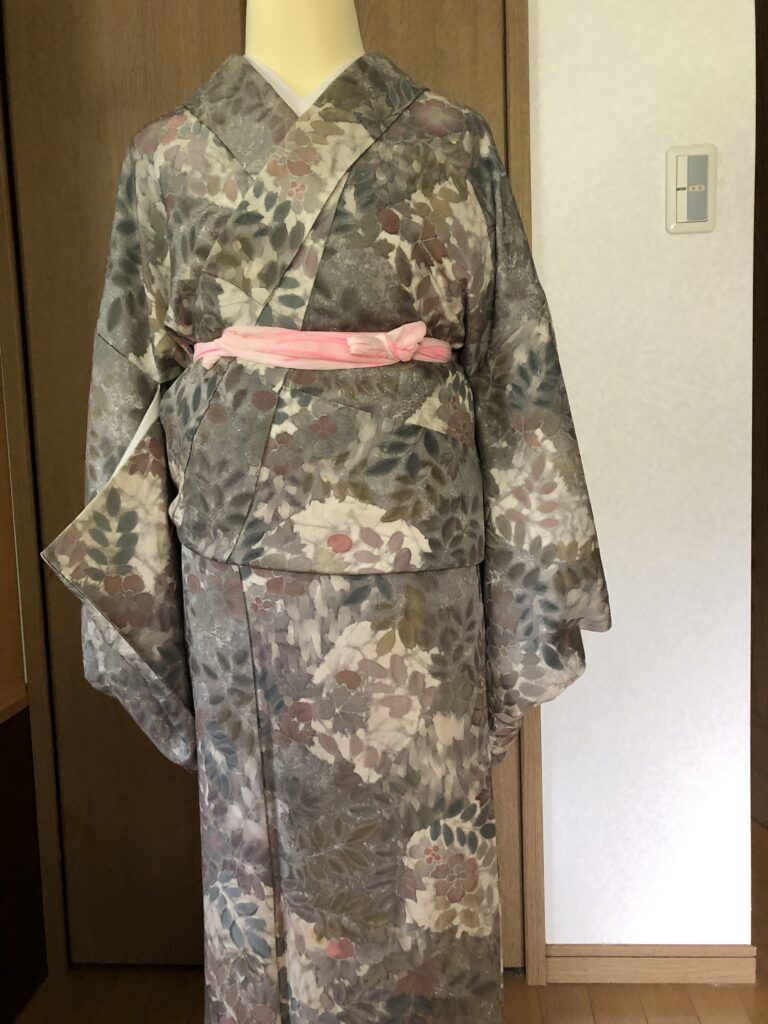
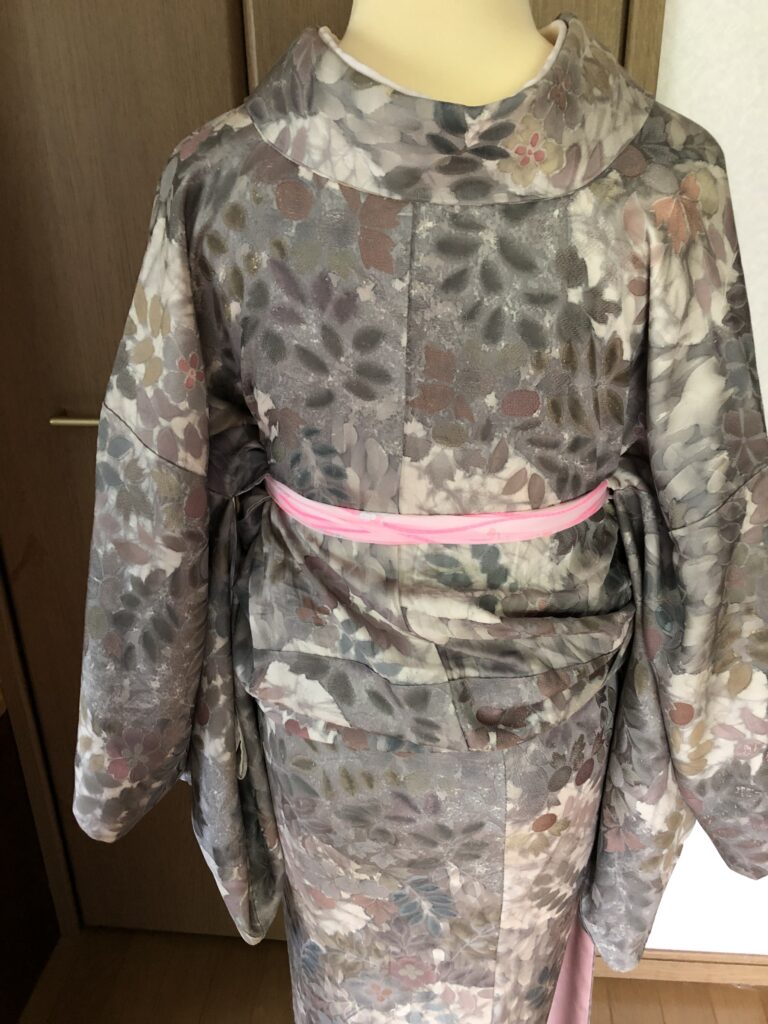
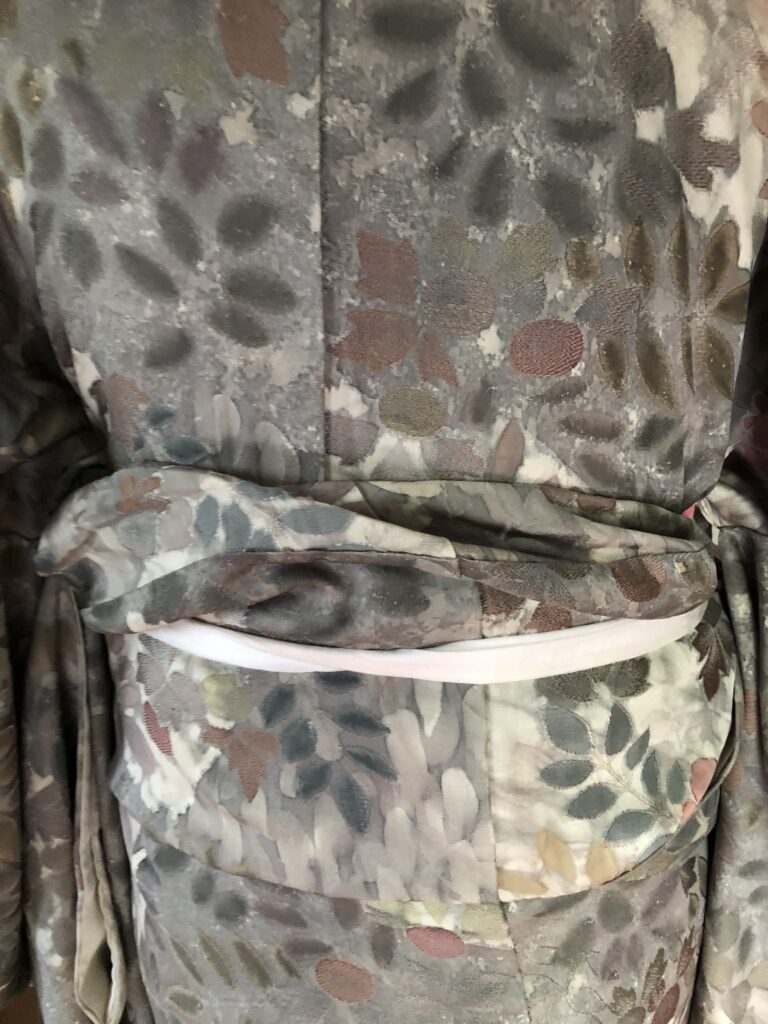
最後まで読んでいただきありがとうございました。
I am sorry for my poor English.
Thank you for reading through to end.
